If you purchase an independently reviewed item through our site, we earn an affiliate commission. Read our affiliate disclosure.
Honeybees are fascinating little creatures, and it is interesting to know that the basic beehive came about as a result of the study of the natural honeybee nest. In this article we’ll dive into the honeybee brood nest, and how to identify and understand the different types of cells that are found in a beehive. But first, we’ll talk a bit about how honeybees choose their nest in the wild.
The popular Langstroth beehive is specifically designed to emulate the natural environment of the honeybee colony. During studies of the natural honeybee habitat, several key things were noticed. Honeybees would construct their nests in areas that would shelter them from the elements, and there was a small opening which the bees would use to enter and exit the nest. Brood separation, the presence of honeycomb cells and the intricate utilization of space were also observed. The Langstroth design takes all of these things into consideration.
Honeybees require an enclosure that is well-sheltered and dark. Available within the beehive is a small entrance that provides access for the bees. In most cases, this is a guarded space that is well-sealed to keep out intruders. The beehive should also be spacious enough to allow for good aeration and temperature regulation. Brood and food reserves are also separated in the hive.
How Honeybees Choose a Nest in the Wild
Honeybees are highly organized when it comes to the segregation of roles within the colony. A swarm has to search for a new home since they cannot stay outside for long. The scout honeybees are in charge of this role. The swarm will send out a number of scouts that will hover around their area of interest before landing there for inspection. They will then walk inside the space and take their measurements (though not literally with an instrument). If the space meets their preferred size, they will go back and lead the swarm into the new home. Once they are all inside the cavity, the entrance and the inner hive areas are smoothened using propolis. Propolis will also be used to reduce the size of the entrance.
Bees are never too picky about the type of tree to inhabit when in the wild, since the options at their disposal vary depending on the region. Some of the most common trees you can find a honeybee colony in the wild include oak trees, maple trees and pine. Honeybees will look for a tree cavity or an opening where they can get in and establish their colony. One factor that honeybees take into consideration is the elevation of the tree. Tall trees are highly preferred, though you will still find some bees that establish colonies on tree cuts near the ground. In most cases, however, honeybees tend to prefer live taller trees.
Some of the things considered before site selection include space or volume, cavity quality, elevation, exposure, and size of the entrance.
Space
Space really matters since it will determine the colony size and affect air movement within the bee colony. Honeybees prefer a space that will range in size from 20 to 100 liters. Honeybees in cold regions prefer larger spaces, whereas those in warm regions will utilize smaller spaces. As a matter of fact, they can readily live in an open space.
Elevation
As mentioned above, elevation is yet another important consideration for bees. This refers to the height from ground level. Remember that honeybees are a target of many predators. Bees are instinctively aware of this, and as such they would rather live in a cavity higher off the ground instead of one close to it. The preferred elevation for the honeybee colonies is 9 feet (3 meters) off the ground.
Level of Exposure
The shelter or level of exposure also matters to a honeybee colony. Openings or spaces that are more enclosed are preferred. This can also be attributed to the fact that these enclosures are much safer for the bees. Contrarily, bees dislike exposed cavities since they are more susceptible to invasion.
Cavity Quality
The quality of the space is also important when it comes to the establishment of a bee colony. Spaces that are clean, unoccupied, and dry are best. Honeybees tend to be allured as well by spaces that have been previously occupied by another honeybee colony. Think of it as a Yelp review for nesting locations.
Security
One of the key aspects that guarantee the survival of a honeybee colony is security. This means that the beehive and the bees should be well protected from the elements of nature. Natural beehives are greatly affected by drastic changes in weather. Cold temperatures have a serious impact on exposed honeybee colonies; these will seldom make it through winter. This is also true for honeybees colonies in temperate regions. Fortunately, honeybee colonies in tropical regions will still survive even when established in exposed tree cavities. These regions tend to be warm throughout the year, hence their high survival rates.
The Making of a Honeybee Colony
Beeswax is an important material produced by worker bees. Without this, honeybee nest establishment will be an impossible task. This is secreted from organs within the lower part of the abdomen. They are molded into sheets referred to as combs which are hexagonal in shape. The bottom part of the comb is that of a three-sided pyramid and its design ideal is for maximum stability.
Honeycomb
Honeycomb cells are multipurpose, and the bees use them to hold honey, pollen and their brood (workers and drones). Worker cells are used for nurturing the worker bees (which are female). Available also are drone cells that are larger than the worker cells; these are used for raising the drone bees (which are male). On average, 15% of all cells in a wild honeybee nest are designated for the drone bees.
The natural structure of the combs within a natural beehive nest is relatively simple. Honeybees will construct several combs at a go. More combs are added as the colony expands. Honeybees usually arrange the combs in such a way that a 1cm space is left between combs. This space is referred to as the bee space. The combs are built from the top downwards, which means that they are suspended at the top of the cavity. Honeybees will fill empty spaces of less than 3/8 inches with propolis. Large spaces will be filled with new combs. Bees will utilize all the space available but are keen enough to set aside space for good aeration.
Food Storage and Brood Rearing
Food storage and brood rearing are two independent aspects of colony construction, and these are usually separated. The honeybee brood nest is where the eggs, larvae, and pupae are raised. It is located on the lower part of the hive, which is compact and spherical in shape, hence making it an excellent place for brood rearing. It guarantees the required temperature level is attained. Honey is stored on the top and towards the sides of the brood nesting area. Another important hive food – pollen, is kept in empty cells within the brooding area. It is however kept away from the active brood nest.
Inside the Honeybee Brood Nest
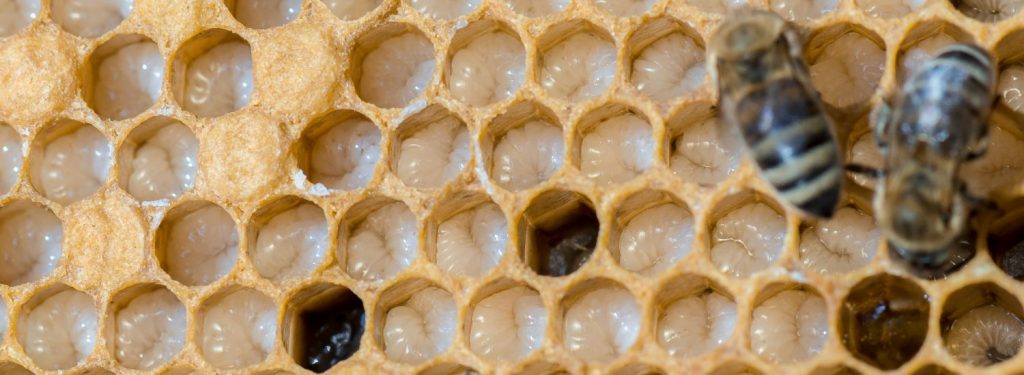
Simply put, the honeybee brood nest is the area where the brood is raised or nurtured. Brood simply refers to the phases that the bee goes through before it becomes an adult. These include the egg, larvae, and pupae stages in the bee growth cycle.
Honeybee Brood Development Stages
Egg Stage
The egg stage is the first cycle in honeybee development. The queen bee will lay one egg in each cell. The worker bees will build the required number of cells with respect to the colony’s needs. The majority of the eggs laid by the queen will develop into worker bees. Worker bees are born from fertilized eggs. The unfertilized eggs, on the other hand, are laid into the drone cells and will grow into drone bees. This stage of bee development takes 3 days.
Larvae Stage
The larvae stage begins after 3 days. The egg takes a worm-like form which is fed solely on royal jelly initially, and then honey and pollen. However, there is an exception to this. A future queen is fed on royal jelly at all times until maturity. The larvae will eat constantly and will grow very fast, getting 1500 times bigger than it was within 5 days. The cell will then be capped using wax as the larvae form a cocoon over itself. This stage will last for 6 days, though it varies for the queen, worker, and drone bees. For the queen it will take a shorter time, the worker a little longer, and the drone bees the longest.
Pupae Stage
The pupae stage is the third and final stage in the honeybee development. The small creature hidden underneath the capping begins to develop and take the shape and form of an adult bee. It will begin to form its legs, wings, eyes, and small hairs that cover the body. The stage will take 14 days (which varies with the type of bee under formation). Once it is mature, it will chew its way out of the cell. This stage’s duration is also similar to the larvae stage. It is much shorter for the queen, longer for the worker bee, and the longest for the drones.
What is Capped Brood?
Brood cells are capped after the eggs are laid and larvae stages are completed. Upon capping, the larvae remain in a cocoon and grow into pupae and later an adult bee, which will chew its way out of the cell. This will be the case with a worker bee. The drone bees will require support from adult workers that will chew for it a way out.
Capped worker bees are located at the center of the frame and have a slight dome shape, almost flat. They are not translucent like honey cells.
The capped drone cells are larger in diameter and have more dome shape, unlike the worker cells. They are grouped at the lower edge of the frame and appear rounded as a bullet.
What are Queen Cells?
There is a big difference between the queen, worker and drone cells. Queen cells are peanut-shaped and hang uniquely from the frame. These cells are formed for 3 reasons which include: supersedure, emergency and swarming.
The formation of the queen cell begins with the building of the queen cup. This is simply a cell that is bigger and peanut-shaped. The queen will then lay an egg into this cell which will then be cared for by the worker bees. Queens are fed solely on royal jelly that is produced by the hypopharyngeal gland, which lies in the pharynx (an organ located in the head of the worker bee). The queen bee larvae will eat more than 25% of the food it is given when compared to the worker bee larvae. It also grows at a much faster rate; it will increase in weight by 1300 times for a duration of 6 days.
The nutritious royal jelly is reserved for the queen even though the worker and drone bees enjoy it for a few days during their early life (they are fed on pollen and honey thereafter). Royal jelly is now used widely by human beings due to its immense benefits.
The queen bee is the only egg-laying member of the honeybee colony, and as such, is responsible for populating the entire hive.
Queen cells can be categorized into 3 types:
Supercedure Cells
Supercedure cells are formed in order to create a new queen that will replace the old one. This will happen when the queen in place is deemed weak, either due to being sick or too old. Honeybees are excellent managers of their colony and they understand when it is time to put in place a new queen. New larvae will be identified and fed strictly on royal jelly. A supersedure cell will then be built around the larvae, and this will be found hanging in a vertical position at the center of the frame. These cells are rare.
Emergency Queen Cell
An emergency queen cell will be formed when an unexpected event or emergency occurs. Such an event might have resulted in the loss of the queen and will mean that a new one has to be created.
Swarm Cells
Swarm queen cells are formed when it is time for the colony to swarm but a new one needs to remain in the hive. A swarm will always move with the existing queen and therefore a new one has to be created to guarantee the growth and survival of the colony.
Supersedure and emergency queen cells imply trouble since it means that the existing queen is not performing or there is no queen and a new one has to be created.
What are Worker Cells?
The worker cells encompass the cells that will lead to the formation of worker bees. They usually make up a larger portion of the frame and have a regular size when compared to the queen and drone cells. Worker bees are responsible for caring for and nurturing the worker cells. The capping in these cells is darker in color, unlike the white capping used in honey cells.
What are Drone Cells?
Drone cells refer to the cells that unfertilized eggs that ultimately result in drone bees. The drones are larger in size than the worker bees, and as such, drone cells are larger than worker cells. It is therefore so much easier to identify drone cells in the hive. In most cases, drone cells are near the edges of the brood area. They are placed here for a reason – drone larvae and pupae thrive best under slightly lower temperature levels. This is achievable on the outer layers.
Another way to identify drone cells is by capping. They are normally capped with a large dome shape cap. The number of drone cells created at any given time depends on a number of factors. Bees in the wild tend to create at least 30% drone cells. Beekeepers keep this number a little lower by installing frames with foundation. It helps keep the number between 10 to 15%. Contrarily, the bees find this out of the norm and will revert to their feral instincts, hence the building burr combs to increase the number of drone bees.
Foundationless beehives tend to encourage bees to create more drone cells which result in more drone bees. In this case, the bees will stick to their natural way of living since they have more control over cell size.
What are Honey Cells?
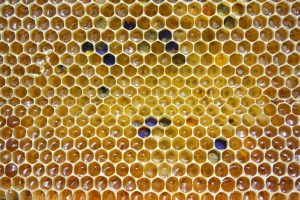
These are the cells that act as reservoirs for honey. They come in two types: uncapped and capped honey cells.
Uncapped honey cells refer to open cells that usually contain wet nectar. This is not yet honey per se but it is in the process of being converted into sweet honey. Nectar contains about 18.6% water at this time, hence the reason it cannot be described as honey. The nectar stored in uncapped cells is kept open for a specific reason – to ensure that the moisture content evaporates for the correct moisture level to be attained.
Capped honey cells refer to the cells that are coated with a film of beeswax. This is fully formed honey that has attained the required moisture content. Honeybees instinctively understand when the right moisture level is attained and only then will the cells be capped. Once capped, the honey will stay in good condition and no more moisture will evaporate. The honey is also capped so as to keep predators away.
Capped honey is not easy to access by either bees or humans. For humans, we use an uncapping tool whenever we need to extract honey frames. The bees have to chew the wax away whenever they need to consume honey. The beeswax capping is at times so thin that you can see through it.
What are Pollen Cells?
Pollen cells are used to store pollen. This is a rich and nutritious product for the bees collected from flowers and used for feeding the entire colony. Pollen is rich in lipids, proteins, minerals, and vitamins. It is available in different types and will vary in color depending on the flower. Some of the common types of pollen include: even, mixed pollen, or glossy pollen.
A single honeybee colony will collect about 100 pounds of pollen for an entire season. Larger colonies will collect more than this.
The Roles of the Queen Bee
Reproducing
The main role of the queen bee is to lay eggs in the beehive. A healthy queen bee of good stock, that has been mated and is fed well, lays up to 1,500 eggs in a day. The spring build-up is a time for queen bees to do their best in being the reproducers in their honeybee colonies. In its life within the beehive, the queen bee is always surrounded by worker bees tending to her various needs. These include feeding her and clearing her waste from the beehive.
Emitting Binding Pheromones
Tending to the queen bee gives worker bees the opportunity to pick up pheromones from her. The queen bee produces the pheromones and has the worker bees spread them throughout the beehive. Some of the pheromones may also leave the beehive. Honeybee queen pheromones prevent the worker bees from making queen cells to bring up other queen bees. Even then, the queen bee lays an egg in a queen cell if one or more have been made. Outside the beehive, the queen bee pheromones help forager bees find their home beehives when within a certain radius.
Controlling the Sex of the Bee
Queen bees control the sex of new bees produced in the beehive. Once mated the queen bee stores sperm cells in a sac. She releases a sperm cell to fertilize a passing egg in her oviduct when laying the egg. If she does not release a sperm cell, the egg produces a male drone bee. Not many drone eggs are laid in a beehive. The larger size of drone cells communicates to the queen bee that she should lay an unfertilized egg.
Anomalies in hive management and colony reproduction processes and setup can cause a lot of drone eggs to be laid. If that happens, the colony is at risk of collapsing. Major causes of this are a virgin queen that is not mated within a certain timeframe and starts laying unfertilized eggs, and worker bees turning to laying eggs.
The queen bee suddenly going missing from the beehive sometimes results in worker bees starting to lay eggs. However, these are unfertilized eggs and can only produce drone bees.
The Worker Bee and Her Many Roles
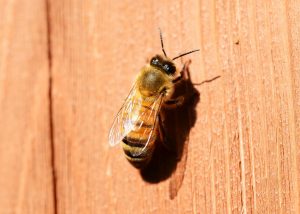
These are female bees that cannot reproduce. They generally dominate all that goes around within the beehive. All the work done is handled by the worker bees, hence their name. Some of the work handled includes housekeeping, pollen and nectar collection, feeding of brood, and wax making. The worker bees live for a short time and this may be attributed to the fact that they do plenty of work during the peak season. They will live for 6 weeks only.
The body structure of the worker bee is easily differentiated from that of drones and queens. They have smaller bodies and are slender. They also have special baskets in their hind legs that are used for collecting pollen. Worker bees have stingers, which if used, will cause them to die.
The roles of the worker bee will differ from one stage to the other. Some of the roles include: making honey, fanning, wax production, nectar transfer, foraging, guarding, bee dance, nursing and serving, and cleaning. Let’s discuss these further.
Making honey
Honey is required for the survival of the honeybee colony. The worker bees make honey that is used for feeding the larvae. It is also stored as a food reserve for winter months. They collect nectar from flowers and convert it into honey. This is also consumed by humans, hence why beekeeping came about.
Making wax
The worker bees have glands underneath their abdomen used for making wax at the early stages of their life. The wax produced is used for building new cells and also capping stored honey. The worker bee consumes plenty of honey in order to produce wax. A kilo of beeswax is produced after consuming 8kg of honey.
Nectar transfer
A worker bee is assigned this role in one stage during its lifetime. This means the bee will receive nectar from a foraging bee and then transport it to the cells. A certain enzyme is also added to the nectar that facilitates the change into honey.
Foraging
This task is undertaken during the midlife of the worker bee. The bees venture outside to collect nectar from flowers. The bee will cover a radius of approximately 4km, visiting more than 4 million flowers just to make 1kg of honey. Remember this next time you want to harvest all the honey from the hive. Foraging is never easy since the bees come across all manner of dangers outside the hive including: being eaten by birds, losing direction, freezing, and many others.
Cleaning
When it comes to hygiene, humans have a lot to borrow from bees. The beehive is the most clean and sterilized of natural habitats. It is kept clean so as to prevent diseases. The worker bees also ensure that used cells are cleaned and sterilized before reuse. In addition, the workers take away dead and diseased larvae. In case a huge predator is stung to death, it is sealed using propolis and left to diminish.
Guarding
Worker bees act as guards at the entrance to the hive. This role is assigned once the bee has developed a stinger. They will sting all intruders including bees from other hives. This they can know using their highly developed sense of smell.
Dancing
This sounds humorous but indeed bees communicate through dances. They use dances when relaying special messages such as the location of food sources when it is time to swarm, the flower’s direction in relation to the sun, and many others. This is an important role played by the worker bees.
Nursing
The worker bees feed and nurse developing larvae. They feed it on honey, royal jelly and pollen. They also care for and serve the queen and drone bees. Nurse worker bees will feed, remove waste, and groom the larvae.
Fanning
This is an important role given the fact that the hive requires optimal temperature for its survival. The worker bees fan their wings within the hive so as to encourage the free circulation of air. The others stay at the entrance and fan fresh air into the colony.
Understanding the Different Brood Patterns

This is a popular term you will hear from most experienced beekeepers. It simply refers to the location where the queen laid her eggs. It also refers to the shape portrayed by the brood nest. Eggs are normally laid in groups by the queen. The grouped eggs take a shape referred to as the brood pattern. This is more visible when brood cells are capped with wax. The newbie beekeeper might not be able to see the brood pattern, however a professional is able to identify the pattern right away, even in the absence of capping.
Capped brood tends to be skewed towards the center of the frames. The bee cluster in most cases is not so much spherical and the same applies to the brood nest. This therefore means that the brood nest stays warm even during colder nights since the cluster of bees mimics the brood pattern.
A Healthy Brood Pattern
Let’s consider a single frame from the brood chamber, which represents a small portion of the brood nest. The cluster of brood is less concentrated towards the edges of the frame and becomes larger as you progress towards the center. Frames on the edges have the least number of brood when compared to the frames in the middle and the center. A layer of pollen is kept around the brood nest and honey is stored either above or to the side of the pollen reserves. You also will find the drone brood next to the worker brood. They will either be on the side or along the bottom of the brood chamber. When a frame is taken out of a healthy hive you will see a neat pattern of brood, pollen and honey.
A healthy brood pattern will also have some empty cells. This is absolutely normal and is used to warm the brood. However, it is important to note that healthy brood cells are never scattered or random. The capping is brown or tan in color and uniform. They are not sunken and there should never be too many holes in the brood pattern. Such a scenario will imply a weak queen or diseased colony. In some other cases, it might mean that the colony is too small to manage the entire brood. The brood pattern, therefore, helps the prudent beekeeper when managing the colony’s health.
The brood pattern enables an experienced beekeeper to make a quick judgment about an existing hive. The arrangement of the honey cells, pollen cells, and brood nest will show if the hive is a weak or thriving colony.
Conclusion
A good understanding of the honeybee brood nest is essential for maintaining a healthy bee colony. As a beekeeper, your main work is to support the colony in carrying out its normal activities. This will help the bees manage all the things they have to deal with. Honeybees are highly sensitive and will react negatively to any bad situation. Also, the key point to note is the fact that the bees will build multiple cells, including queen cells, at any given time. If you see a number of queen cells clustered together then do not be alarmed. This is mostly done as insurance in case a new queen is required.
References
- https://www.britannica.com/science/broodnest
- https://agriculture.vic.gov.au/biosecurity/animal-diseases/honey-bee-pests-and-diseases/field-diagnosis-of-honey-bee-brood-diseases
- http://www.dave-cushman.net/bee/nestshape.html
What are your thoughts on this article? Leave a comment below and let us know.
 BeeKeepClub Resources and Guides for Beekeepers
BeeKeepClub Resources and Guides for Beekeepers

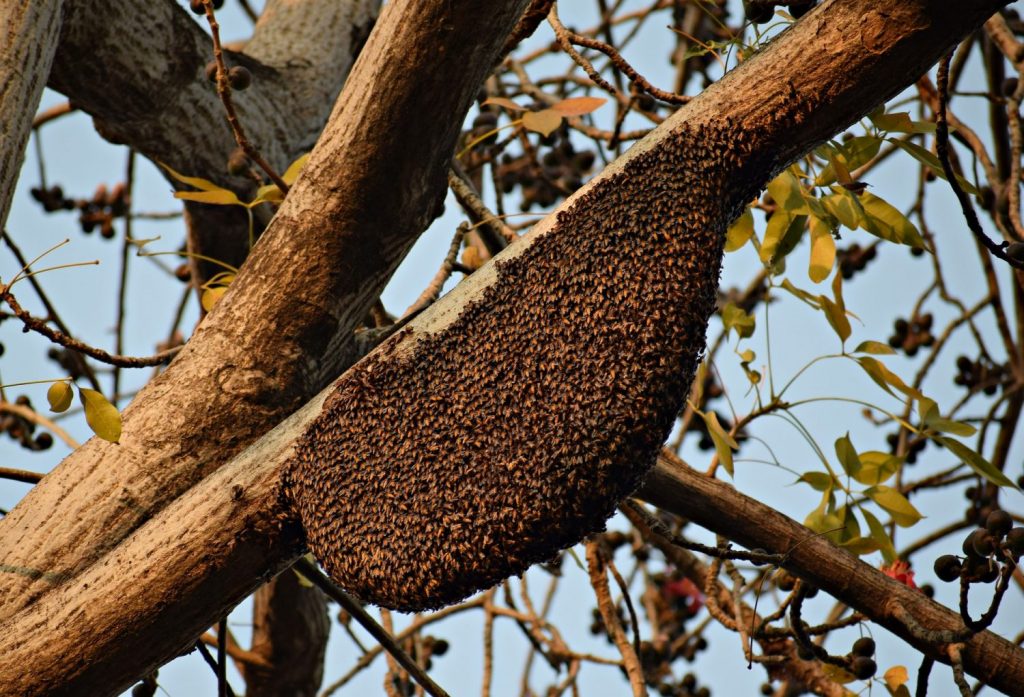
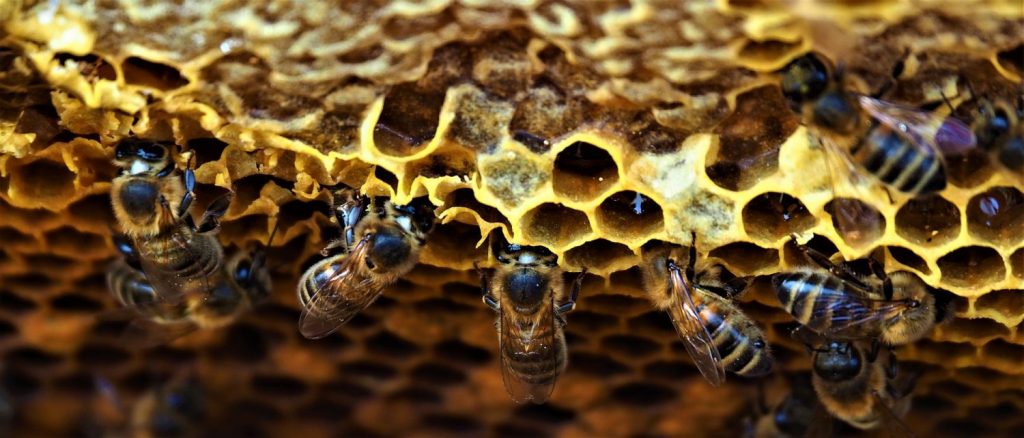
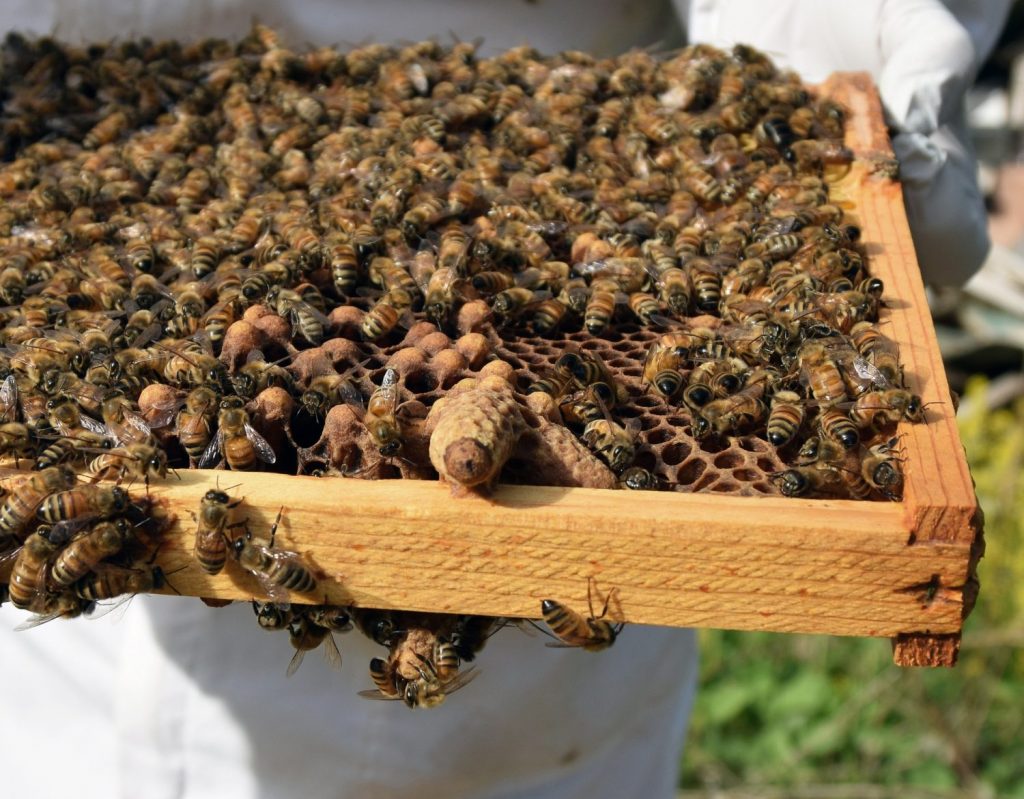
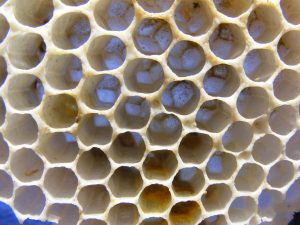
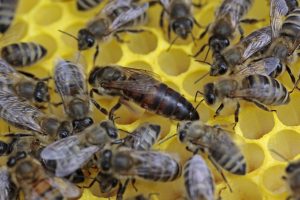
Thought that it would cover different patterns of brood. Just starting months ago, found one colony with honey on the edges but they were filling in the center with nectar. Could not find a queen, didn’t see brood.
Good article, but some more pictures of brood pattern would have been helpful
Hello, thank you for your comment. I will be sure to update the article with more pictures.
Very well written!!
Thank you!
[…] of this practice is in the balance. Research has found out that clipping may not increase queen supercedure. It also has very little impact on honey production. At the same time, clipping the queen bee’s […]
[…] new cells that are built using wax mainly serve two purposes: raising brood and storing honey. Various cells are built with different sizes to cater to drones, queens, or […]